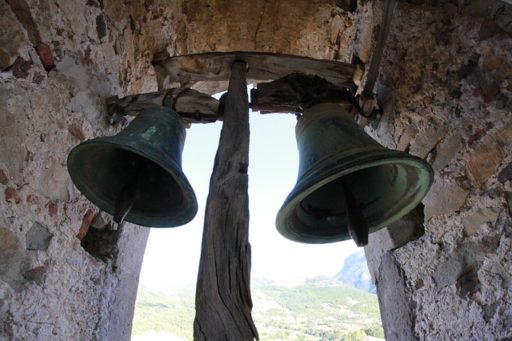I became interested in the mystery genre watching the Agatha Christie series on TV in the 1980s and 1990s with my mother. Later I discovered the written work of P. D. James and Dorothy Sayers. My mother and I came to diverge regarding the variety of genre fiction known as mysteries. I decided early on and unconsciously that the chief value of mysteries was to furnish a particular vision of Englishness. This became more important to me, and I became more consciously convinced of it, as I grew older and devoted my life to the study of literature in all the European languages but especially the literature of my native tongue, for I became invested in the place where that tongue was born. My mother read mysteries by American authors, but I have never been interested in mysteries set elsewhere than in England. The best of all such mysteries, in my opinion, and perhaps the one that best justifies my feeling for the genre, is the one that I have just re-read, Sayers’s finest work, The Nine Tailors.
The novel takes its title from the name of a bell. The largest bell in the church in the Fen Country that is at the center of the story, is called Tailor Paul, and when a man dies the bell is tolled nine times, i.e., gives out nine Tailors. The plot involves the death of an unidentified man, and mistaken and false identities, and in the back story a heist at the local great house. In other words, the plot is like that in all mystery novels; the most basic inclinations to sin and its expressions are etched in bas relief. I won’t go further into it.
The plot is essential in any novel, but there’s not much to say about it, and whatever can be said—the element of the story that can be paraphrased—is trivial or obvious. To my way of thinking, plot is the scaffolding a writer uses to construct a story—but the story is the cathedral that rises beneath the scaffolding. This is so even in the mystery genre. The mystery, or the story, is not the plot.
Church bells and England—that is what this story is about, that is the real mystery. But what is a mystery, anyway? In the responsum for matins on Christmas morning, Western Christians may hear:
O great mystery,
and wondrous sacrament,
that animals should see the Lord born,
lying in a manger.
You see right there how the Christian tradition that grew up in the Latin-speaking world used sacramentum, originally a military oath, to translate Greek mysterion. To this day the sacraments of the Christian Church are called mysteries in the Greek-speaking Church. A mystery was not at first something unknown and puzzling, but something miraculous, something at once revelatory and concealed. Greek muein, the root of mystery, means to close one’s eyes or lips. The deeper root gives the Latin word from which we get mute.
Now, to be deliberately blind or silent means one may later see again, or speak. That which is known to be concealed, is yet known in some way. If you want to know something, you must already know it in a way. This is the paradox of all desire, of course. When Christianity first spread through the world of late antiquity, it looked like just another mystery religion. And the Christians who initiated new members into the religion bore the long-established title of mystagogue, one who leads into the mystery. Imagine if we used that word instead of “detective” or for that matter “narrator.”
But I was supposed to be talking about England and campanology—that would be the ringing of bells, specifically in this case a use of church bells called change-ringing. Change-ringing developed in seventeenth-century England, three hundred years before the oddly similar invention of dodecaphonic music in the classical tradition. The method is mathematical: bells which each give a different pitch are rung in changing series that are based on their numbers, so you have actually series of series of tones.
The language used to describe how one series changes into another (so you “ring the changes”) is strange, in part because it comes from the early modern period. Bells “hunt” and “dodge” and “pass” each other in their “courses,” there are “touches” and “peals,” and the different series have names like “grandsire triples.” This unique English furnishes Sayers with the interior titles of the novel, such as: “A Full Peal of Kent Treble Bob Major” and “Mr Gotobed Is Called Wrong with a Double.” To an American it can sound like the adorable gibberish of the game of cricket. The point here is that it is a distinctively English language and sacred music.
I’m fascinated by the meeting of the sense of place and the sense of the sacred, and that meeting is nowhere more harmonious than in Sayers’s novel. It begins and ends around Christmas and the turn of the year, and is set in the Fens, the low-lying coastal region around the Wash in the east of England and certainly the flattest region in the British Isles. Dorothy Sayers was the daughter of a vicar (she was born a year after Tolkien and The Nine Tailors was published a few years before The Hobbit), and grew up in Bluntisham, on the edge of the Fens. Later her father moved to another parish, further in the Fens. It is country she knew well, and its presence in The Nine Tailors, along with the change-ringing, is what defines the book for me. Indeed, the sacred music and the land are the mystery, in the religious sense of that which is both concealed and calling, that which is hidden or latent but reveals itself through story.
Much could be said about the other ways the novel appeals, such as its depiction of a social order and cohesion, particularly in rural areas, now largely lapsed from Britain. But that is the sort of thing that most of the golden age of mystery writing shows. To me, the most distinctive achievement of The Nine Tailors is the way it marries the sense of place and the sacred, the bells and the land (and shows the beauty of both mixed with human folly). So to close, here is a passage in which the author, like a true mystagogue, turns technical language into poetry and cold praise of this earth:
The bells gave tongue: Gaude, Sabaoth, John, Jericho, Jubilee, Dimity, Batty Thomas, and Tailor Paul, rioting and exulting high up in the dark tower, wide mouths rising and falling, brazen tongues clamoring, huge wheels turning to the dance of the leaping ropes…every bell in her place striking tuneably, hunting up, hunting down, dodging, snapping, laying her blows behind, making her thirds and fourths, working down to lead the dance again. Out over the flat, white wastes of fen, over the spear-straight, steel-dark dykes and the wind-bent, groaning poplar trees, bursting from the snow-choked louvers of the belfry, whirled away southward and westward in gusty blasts of clamour to the sleeping counties went the music of the bells.
Jonathan Geltner lives in Ann Arbor Michigan with his wife and two sons. His translation of Paul Claudel’s Five Great Odes is available from Angelico Press and a novel, Absolute Music, is forthcoming from Slant. He writes more about the meeting of fantasy and fiction with theology, philosophy, music and the sense of place at betweentwomaps.com





